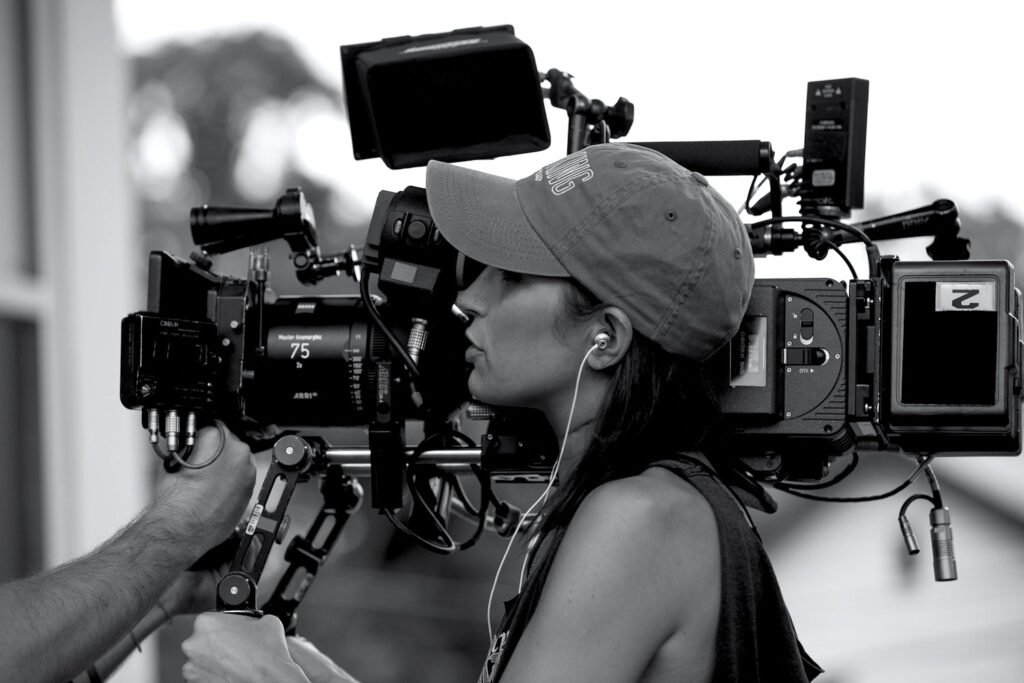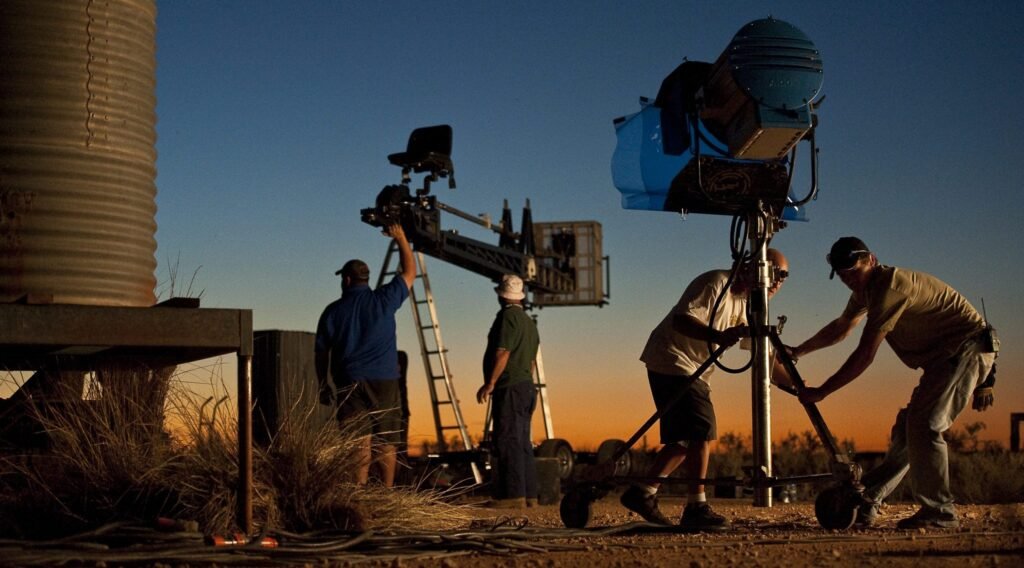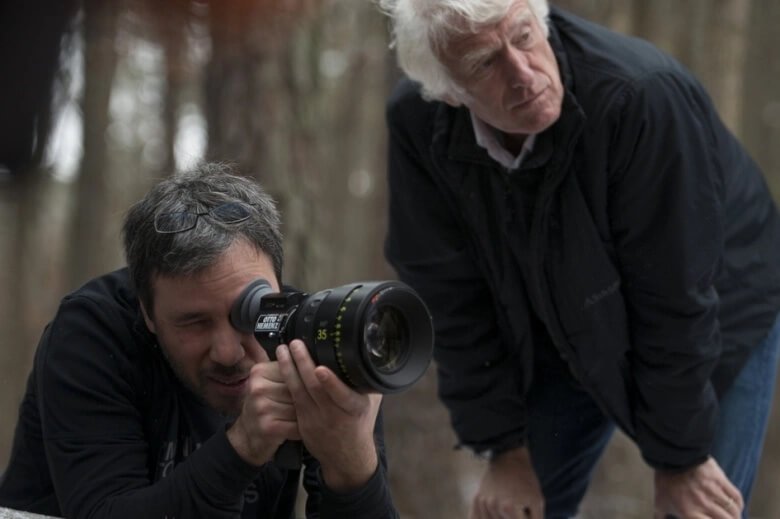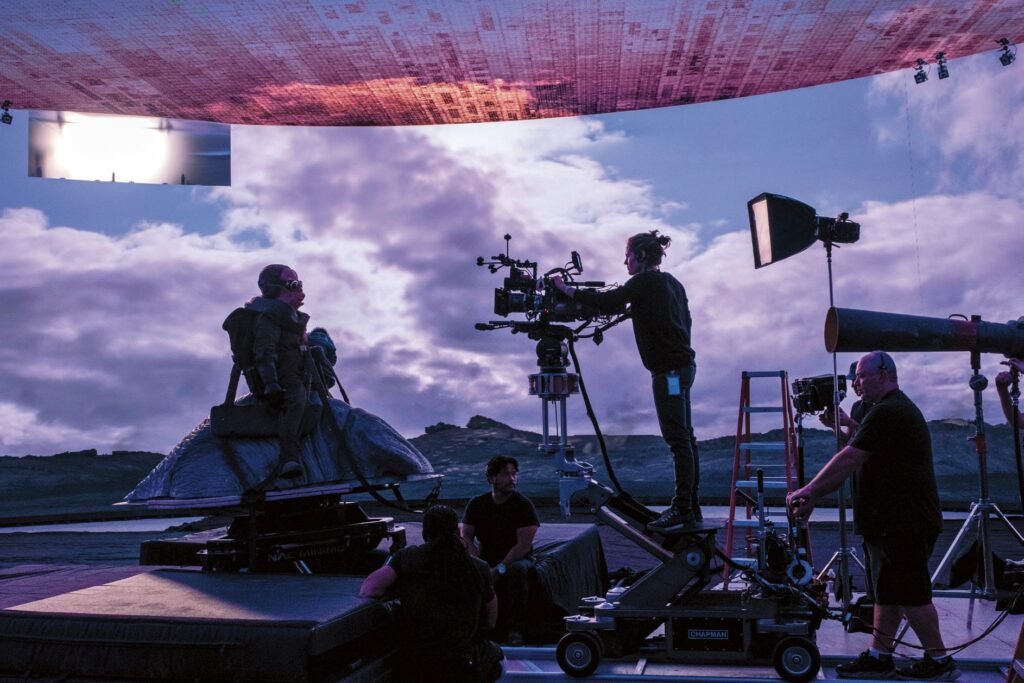Cinematography is the art and science of capturing moving images on film or digital media. It is an essential aspect of filmmaking, as it determines how the story is visually portrayed on screen. The way a film looks, the mood it conveys, and the emotions it evokes are all determined by the cinematographer role. They are the ones responsible for creating the visual language of the film, and their choices have a significant impact on the final product.
As a visual storyteller, the cinematographer works closely with the director to bring their vision to life. They are responsible for creating the look and feel of the film, ensuring that every shot is carefully composed, lit, and exposed to convey the desired mood and atmosphere.
This article will delve into the world of cinematography and explore the role of a cinematographer in visual storytelling, as well as the creative process, essential skills, and tools they employ in their craft.

Table of Contents
Defining the Cinematographer Role: What Does A Cinematographer Do?
A cinematographer, sometimes referred to as a Director of photography (DP), is a professional responsible for the technical and artistic aspects of capturing images on film or digital media. They work closely with the director to create the visual style of the film, making decisions about camera angles, lighting, and image composition to bring the story to life. In short, the cinematographer is the person who translates the director’s vision into a series of moving images that make up the film.
The cinematographer role is complex and multifaceted. They must have a deep understanding of the technical aspects of filmmaking, such as camera and lens selection, exposure, and lighting, as well as a strong artistic sensibility to create visually arresting images that support and enhance the story. A good cinematographer is not only technically proficient but also has a keen eye for detail and a strong sense of visual storytelling.
The Cinematographer’s Role in Filmmaking
The role of the cinematographer is crucial in filmmaking, as they have a significant impact on the visual aesthetics of the film. The cinematographer’s choices can enhance or detract from the story being told, making their contribution indispensable to the success of the project. The cinematographer is responsible for crafting the film’s visual language, using light, color, and composition to create memorable images that transport the audience into the world of the story.
Cinematographer role in shaping the overall mood and atmosphere of the film. By carefully selecting and manipulating the elements of the frame, they can create a sense of tension, romance, or dread, depending on the needs of the story. The cinematographer’s work is essential in evoking the desired emotional response from the audience and immersing them in the film’s narrative.
In short, the cinematographer’s role is vital in bringing the director’s vision to life, creating a cohesive and visually stunning film that engages the viewer and leaves a lasting impression.

Key Role of A Cinematographer
The responsibilities of a cinematographer are vast and varied, encompassing both technical and creative aspects of filmmaking. Some of their primary duties include:
- Collaborating with the director to develop the visual style of the film, taking into account factors such as the story, setting, and characters.
- Selecting the appropriate camera, lenses, and other equipment to achieve the desired look and feel of the film.
- Developing a shot list and planning the camera movements and angles for each scene, ensuring that the images captured effectively convey the story and emotions of the characters.
- Overseeing the lighting design, working with the lighting team to create the desired mood and atmosphere for each scene.
- Managing the camera crew and ensuring that all shots are correctly framed, focused, and exposed.
- Supervising the post-production process, working with the colorist and editor to ensure that the final product maintains the intended visual style.
The creative process: How Cinematographers Bring a Story to Life
The creative process of a cinematographer begins with a thorough understanding of the role of a cinematographer in the script and the director’s vision. This involves analyzing the story, characters, and setting to determine the visual language that will best serve the narrative. The cinematographer must also consider elements such as color palette, lighting, and composition to create a cohesive and visually engaging film.
Once the visual style has been established, the cinematographer must carefully plan each shot, considering factors such as camera angle, camera movement, and lens choice to effectively convey the story and emotions of the characters. This process requires a keen eye for detail and a deep understanding of the technical aspects of the role of a cinematographer in filmmaking.
During production, the cinematographer is responsible for overseeing the camera, grip, and lighting teams, ensuring that every shot is executed according to the plan. This requires strong leadership skills and the ability to communicate effectively with the crew, all while fulfilling the role of a cinematographer.
Finally, in post-production, the cinematographer works with the colorist to refine the images, ensuring that the final product maintains the intended visual style and supports the story. The role of a cinematographer in filmmaking is therefore critical in the entire process of bringing the story to life on the screen.
Collaborating with the film director
The relationship between the cinematographer and the film director is a crucial aspect of the filmmaking process. The two must work closely together to bring the director’s vision to life, with the cinematographer acting as the director’s right-hand person in terms of visual storytelling.
The collaboration begins during the pre-production stage, as the director and cinematographer discuss the script and develop the visual style of the film. They must have a shared understanding of the story, characters, and setting, as well as a clear idea of the emotions and atmosphere they want to convey.
During production, the director and cinematographer must maintain open lines of communication, discussing each shot and any potential challenges or changes that may arise. The cinematographer needs to be adaptable and flexible, able to respond to the director’s feedback and make adjustments as needed.
Ultimately, the success of the collaboration between the director and cinematographer hinges on trust and mutual respect. Both must be willing to listen to each other’s ideas and find creative solutions to achieve their shared vision.

The essential skills and tools of a Cinematographer
A successful cinematographer must possess a unique combination of technical proficiency and artistic vision. Some of the essential skills and tools required for the job include:
- A thorough understanding of camera technology, including lens selection, exposure, and focus.
- Expertise in lighting design and the manipulation of light to create mood and atmosphere.
- A strong sense of composition and framing ensures that every shot effectively conveys the story and emotions of the characters.
- The ability to plan and execute complex camera movements and angles.
- Excellent communication and leadership skills, as the cinematographer must effectively manage the camera and lighting crews.
- A deep knowledge of film history and visual storytelling techniques, allows the cinematographer to draw on a wide range of influences and references in their work.
In addition to these skills, a cinematographer must also possess a keen eye for detail and a strong sense of visual storytelling, as well as the ability to adapt and problem-solve under pressure.
The evolution of Cinematography and its impact on modern filmmaking
The art and craft of cinematography have evolved significantly over the years, with advancements in technology and changes in filmmaking styles shaping the way stories are visually told.
From the early days of silent films to the advent of digital technology, cinematographers have continually adapted their techniques and tools to reflect the changing landscape of the medium.
One of the most significant developments in recent years has been the transition from film to digital cameras. This shift has not only impacted the way images are captured and processed but has also opened up new creative possibilities for cinematographers.
The increased flexibility and control afforded by digital technology have allowed for greater experimentation with color, lighting, and composition, leading to new and innovative visual styles.
The rise of independent filmmaking has also had a profound impact on cinematography, as budget constraints and smaller crews have forced cinematographers to find creative ways to achieve their vision with limited resources.
This has led to a greater emphasis on natural light and practical locations, as well as a return to more traditional filmmaking techniques.
Despite these changes, the core principles of cinematography remain the same: to tell a compelling visual story that supports and enhances the narrative.

Breaking into the industry: Tips for aspiring Cinematographers
For those looking to pursue a career in cinematography, there are several key steps to take in order to break into the industry:
- Develop a strong foundation in the technical aspects of filmmaking, including camera technology, lighting, and composition. This can be achieved through formal education, workshops, or self-study.
- Gain practical experience by working on student films, independent projects, or as an assistant on professional sets. This will not only help you build your skills but also provide valuable networking opportunities.
- Create a portfolio of your work, showcasing your unique visual style and demonstrating your ability to tell a story through images. This is an essential tool for attracting potential employers and collaborators.
- Network with other professionals in the industry, attending film festivals, workshops, industry events, and organizations like The Australian Cinematographers Society (ACS) to make connections and stay informed about the latest trends and opportunities.
- Stay up-to-date with advancements in technology and filmmaking techniques, continually refining your skills and adapting to the evolving landscape of the industry.
Persistence, passion, and a commitment to learning and growth are essential qualities for any aspiring cinematographer, as the film industry is both competitive and ever-changing.
The Art and Craft of the visual storyteller
Cinematography importance is a vital aspect of filmmaking, as it shapes how stories are told and experienced on screen. The role of the cinematographer is both technical and artistic, requiring a unique combination of skills, knowledge, and creativity.
As a visual storyteller, the cinematographer is responsible for creating a cohesive and visually stunning film that engages the viewer and leaves a lasting impression. They work closely with the director to bring their vision to life, making decisions about camera angles, lighting, and composition to convey the desired mood and atmosphere.
The creative process of a cinematographer begins with a thorough understanding of the script and the director’s vision. They analyze the story, characters, and setting to determine the cinematography importance of the visual language that will best serve the narrative.
They must also consider elements such as color palette, lighting, and composition to create a cohesive and visually engaging film.
The cinematographer’s role is crucial in shaping the overall mood and atmosphere of the film. By carefully selecting and manipulating the elements of the frame, they can create a sense of tension, romance, or dread, depending on the needs of the story.
The cinematography importance is essential in evoking the desired emotional response from the audience and immersing them in the film’s narrative.
In conclusion, cinematography importance is an essential part of filmmaking. The cinematographer is responsible for creating a cohesive and visually stunning film that engages the viewer and leaves a lasting impression.
They work closely with the director to bring their vision to life, making decisions about camera angles, lighting, and composition to convey the desired mood and atmosphere.
The evolution of technology and changes in filmmaking styles have shaped the way stories are visually told. From the early days of silent films to the advent of digital technology, cinematographers have continually adapted their filming techniques and tools to reflect the changing landscape of the medium.
For those looking to pursue a career in cinematography importance, it is essential to develop a strong foundation in the technical aspects of filmmaking, gain practical experience, and create a portfolio of work that showcases your unique visual style. Persistence, passion, and a commitment to learning and growth are essential qualities for any aspiring cinematographer.